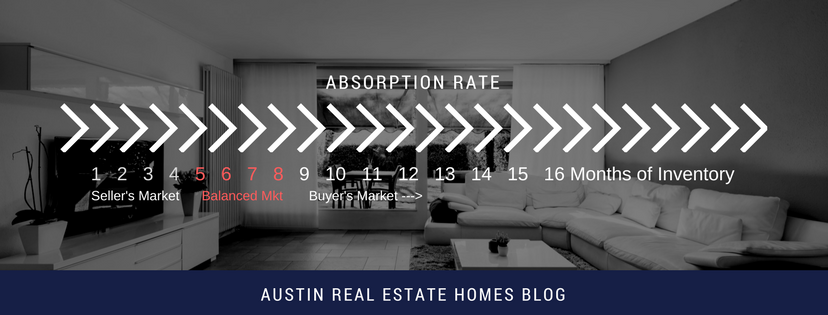
We often hear the term seller’s market or buyer’s market but it may not always be clear how agents determine what type of market we are currently experiencing. Here, we’ll show you how to determine whether it is a seller’s market or buyer’s market and what metrics agents use to distinguish between the two types of real estate markets.
How to Determine Whether it is a Seller’s Market or Buyer’s Market – What Metrics Do Agents Use?
For most agents characterizing whether market forces favor a Seller (e.g. Seller’s Market) or Buyer (e.g. Buyer’s Market) is determined by two factors:
- The rate at which homes are sold, called Absorption Rate
- The average number of days it takes for homes to sell, called Days on Market
What is Absorption Rate?
Absorption rate is the number of homes for sale divided by the number of homes sold per month. This figure shows how many months it will take to sell the present supply of homes on the market.

Absorption Rate – Applying the Numbers
Let’s say, for example, that a particular city has 1,000 homes for sale currently on the market (active listings). If 100 homes a sold each month, the supply of homes available for purchase will be consumed in 10 months. Hence, an absorption rate of 10.
If 200 homes are sold each month the absorption rate would be 5 and presumably half the current supply will be sold in 2 ½ months.
What is the Absorption Rate for a Balanced, Seller’s Market or Buyer’s Market?
An absorption rate of 6 is generally considered a balanced market. In a balanced market, it should take 6 months to sell a house. When absorption rate dips below 6, we are getting into a seller’s market. When absorption rate slides north of 6, we are getting into a buyer’s market.

What Does Absorption Rate Mean for Buyers and Sellers?
A high absorption rate means that it probably will take longer to sell a home and a seller should take steps to clearly demonstrate a home’s superior value and amenities. While a lower absorption rate means that buyers can expect homes to move more quickly and competition among buyers more aggressive.
Calculate Absorption Rate by Price or Neighborhood for More Accuracy
Calculating the absorption rate by price or neighborhood on a monthly, quarterly and yearly basis will provide a clue to the strength or weakness of the local housing market. It’s an excellent way to keep track of a market’s movements. The more specific you can get, the more insight you’ll have.
Days On Market aka the Age of a Listing
Days on market (DOM) is a real estate term denoting the number of days a home has been for sale on the market. You can think of it as the age of a listing. It’s defined as the total number of days a listing has been active on the MLS (Multiple Listing Service) from the date the listing was made active to the date a contract was reached.
Median Days on Market is an Indicator of Market Strength
Agents keep track of the median Days on Market to get a sense of the strength or weakness in the marketplace. An increase in the median days on market suggests a slowing in the market; conversely a decrease in the median days on market implies a quickening of the market activity.
For example, if the median days on market calculates to 40 days, then half the homes sold in less than 40 days and half took longer than 40 days to sell. Slower markets – aka Buyer’s Markets – have higher median days on market than Seller’s Markets.
Absorption Rate and DOM: Comparing Apples to Apples
It should be noted that applying statistical analysis to two or more different cities or neighborhoods will probably result in misleading conclusions and may very well be a fool’s errand. In order to really understand the market, calculate and compare absorption rate and days on market in similar geographies and price ranges.
Considering Buying or Selling a Home in Austin?
We can help you determine what type of market your neighborhood is in and how you can position yourself to be as successful as possible in your next real estate transaction. Our team of experienced agents know the Austin real estate market well and take a consultative approach to buying and selling. That means we won’t hard sell you. Instead, we’ll help you evaluate the facts and help you determine how to accomplish your goals. Check out our Austin Home Buyers and Austin Home Sellers page to learn more about our team and how we work. Then, call us at (512) 827-8323 or email us at info@11OaksRealty.com to schedule a no obligation consultation.
Leave a Reply